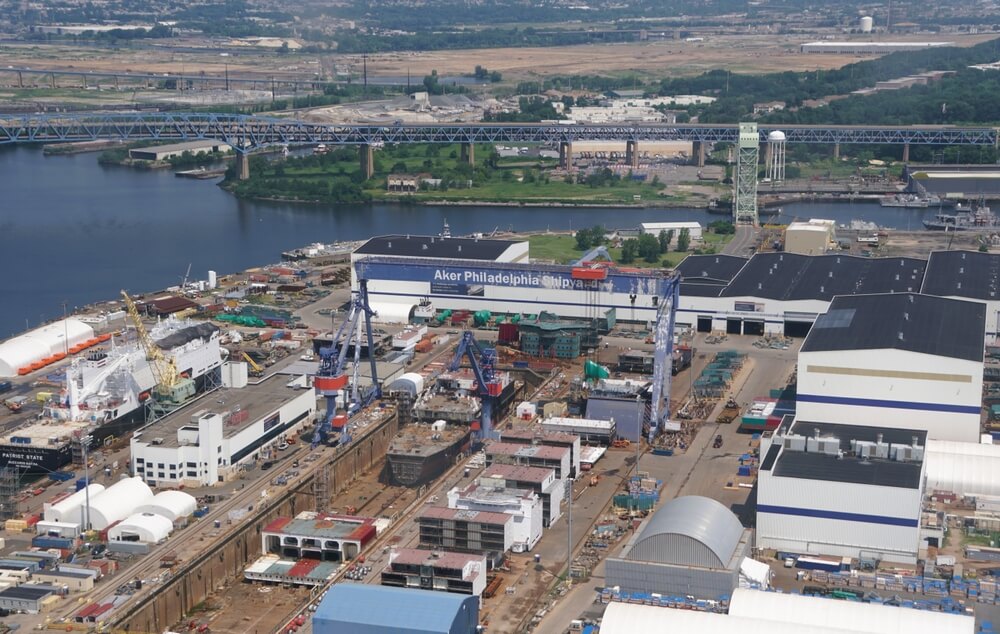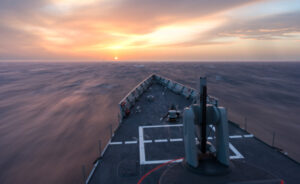The next U.S. president will be faced with a stark choice – whether or not to rebuild what was once a vital commercial merchant marine fleet to support U.S. trade interests around the globe and buttress U.S. military operations when needed.
Recent news articles bemoan the death of the commercial maritime industry and the nation’s inability to generate a replacement to compete in multiple arenas with the People’s Republic of China. And with good reason.
Twentieth century America had significant merchant marine organizations with thousands of vessels for two world wars employed to carry food, munitions, fuel and raw materials. Many of those vessels continued to operate well into the Cold War, but after 1970 the industry to replace and sustain a large merchant fleet degraded as other nations regained industrial strength and built ships at less cost than the United States.
An industry vital to the growth of the U.S.
The merchant marine industry has been vital to the growth of the nation.
Overseas trade was essential to New England, Mid-Atlantic and Southern colonies, and later states. It was the source of luxury goods, enslaved people, security from invasion, food and whale oil. It influenced the culture of the eastern coast of North America as a maritime one. Maritime commerce molded the coastal states and colonies it touched in terms of culture and art. North America also developed a shipbuilding industry and by the mid-19th century built some of the very best sail-driven ships ever constructed.
Colonial America and the Early American Republic were very much sea power states for the 18th and the first quarter of the 19th centuries. Ships carried colonists to early settlements such as Jamestown and Plymouth, and the enslaved African peoples that provided much of the labor in the Southern colonies.
Baltimore shipbuilders created the first “clipper ships” for trade with China and vessels like the Sea Witch, Rainbow, and later the Flying Cloud were the fastest vessels of their time. Flying Cloud’s record of 89 days and 21 hours from New York to San Francisco around Cape Horn remained the fastest for a sailing vessel until 1989.
Whaling also provided economic fuel to the American economic engine. At its height in the mid-19th century, whaling was the 5th largest segment of the economy. By 1845, when 731 U.S. vessels and more than 20,000 men were employed in whaling, the U.S. fleet was three times the size of all other whaling fleets of the world combined.
Shifting economic priorities
The settlement of North America was one of the primary movers in ending the dominance of maritime issues in the American state. Growth of new states west of the Atlantic coast populated by farmers and not sailors or those directly dependent on overseas trade began to change national economic priorities in the early 19th century.
States as far west as Ohio, Indiana, Illinois and Iowa, as well as westward states in the south like Mississippi and Tennessee, moved goods by the Mississippi, Missouri and Ohio rivers. Canals in Ohio connected the Great Lakes region with the Gulf Coast rather than the Atlantic. The port of New Orleans grew, but it did not dominate interior trade as did ports directly on the Atlantic.
This era’s sea power American state ended in the throes of the Civil War from 1861 to 1865, and in the westward expansion that followed and moved the center of the nation further toward the Pacific.
The change from ships of sail and wood to iron and steam doomed the U.S. domestic clipper ship fleet, while the British control of numerous coaling stations worldwide made the U.S. merchant fleet more dependent on British fuel for global operations. Until the two world wars, the United States was a continental state that fielded a mighty navy but relegated the merchant fleet to more military support roles.
Return of an American sea power state
The post-Cold War de-industrialization of the United States has again made the nation dependent on foreign imports for many goods and in some cases food, replicating the conditions where colonials early Americans relied on sea lines of communication for important needs.
The U.S. has again deployed naval forces to a contested maritime choke point (the Bab Al Mandeb and Red Sea region,) where 21st century Houthi pirates again menace vital trade. Despite these developments the United States remains a continental power capable of significant self-sustainment.
Recreating a true culture of sea power such as that found in island nations like Great Britain, Japan and Singapore likely is not possible, but the U.S. can again make the political choice to field a more powerful Navy and merchant marine to support its great power competition efforts.
Additional U.S. merchant ships are vital to the nation’s expeditionary combat operations, as proved in both World Wars, the Cold War and in the 1990/91 Operation Desert Storm.
The U.S. Navy had over 550 ships for that Middle East conflict, but now possess less than 300 to face two peer competitors (China and Russia,) regional threats like Iran and North Korea, and violent non-state actors like the Houthis in Yemen. At the same time, the U.S. merchant marine fleet has dwindled from 398 ocean going ships in 1991 to 185 in the present of which only 167 are militarily useful. China by contrast has 6,000 merchant ships.
The U.S. must improve its seapower capacity or risk returning to dependence on the sea without the means to shape its response to maritime threats.







